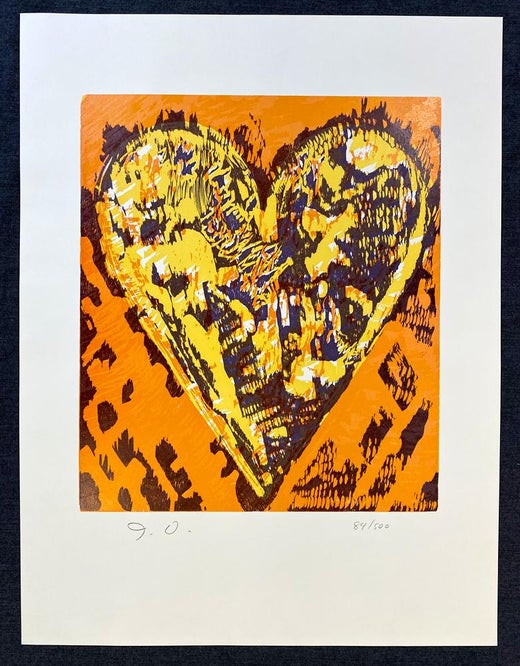Jim DineFo Dog In Hell1990
1990
About the Item
Jim Dine
The Ohio-born artist Jim Dine brought his ever-shifting, multidisciplinary vision to New York in 1958, a time of transition in the American art world. Abstract Expressionism, which had dominated the scene for years, was on the wane, and a group of young artists, including Dine, Allan Kaprow, Jasper Johns and Robert Rauschenberg, was eager to replace it with a movement that flipped the traditional rules of art-making on their head.
Beyond dissolving the boundaries between mediums and genres, attaching found objects and detritus to their canvases, these revolutionaries began staging performative “happenings” in public spaces, redefining the very definition of a work of art. As Pop art took form, Dine used objects with personal significance, like his paintbrushes, to transform his paintings into two-dimensional sculptures. He was included in the Norton Simon Museum’s 1962 “New Painting of Objects,” often considered the first true Pop art exhibition in America, but he remained a chameleon, constantly changing his style, material and technique.
More than his contemporaries, Dine has forged new paths in drawing, scrawling words and names across the canvas to create graphic, abstract landscapes. He is obsessed by certain motifs — such as hearts and his own bathrobe — which recur in various forms throughout his oeuvre. He has occasionally worked in classical genres, such as portraiture, as exemplified by the 1980 aquatint Nancy Outside in July. He has also co-opted the bold, graphic vocabulary of advertising and commercials, as in the sleek 2010 composition Gay Laughter at the Wake.
Find Jim Dine prints and other art on 1stDibs.
You May Also Like
2010s Contemporary Black and White Photography
Black and White, Inkjet, Archival Pigment
2010s Contemporary Color Photography
Archival Pigment
2010s Contemporary Black and White Photography
Black and White, Inkjet, Archival Pigment
2010s Contemporary Black and White Photography
Black and White, Inkjet, Archival Pigment
2010s Contemporary Black and White Photography
Black and White, Inkjet, Archival Pigment
2010s Contemporary Color Photography
Archival Pigment
2010s Contemporary Black and White Photography
Black and White, Inkjet, Archival Pigment
2010s Contemporary Color Photography
Archival Pigment
2010s Contemporary Color Photography
Archival Pigment
2010s Contemporary Black and White Photography
Black and White, Inkjet, Archival Pigment
